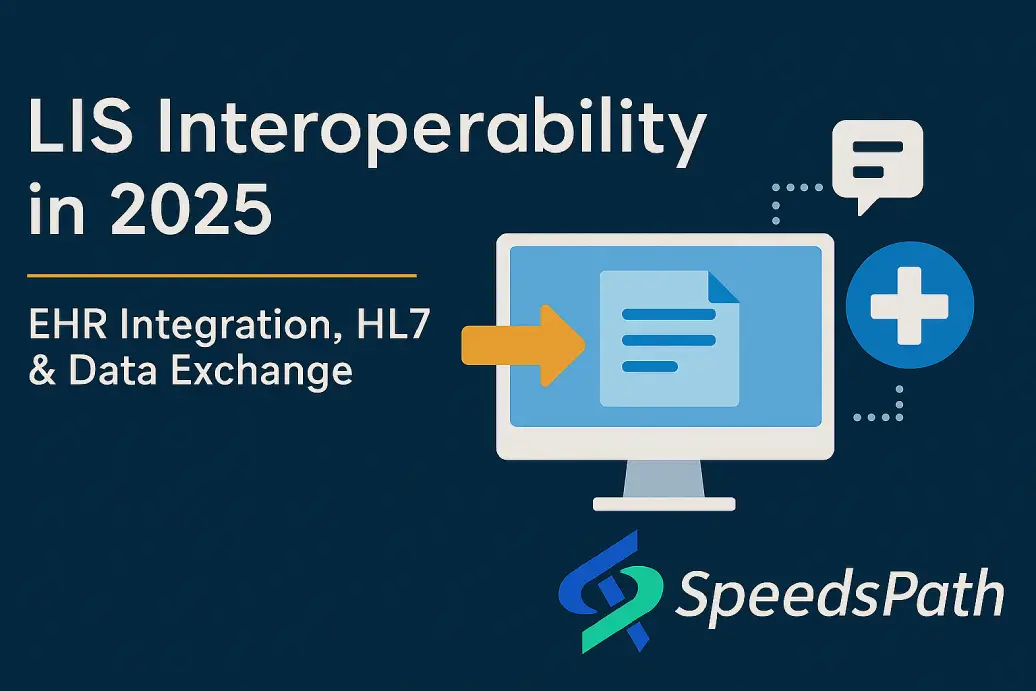Abstract
In 2025, interoperability between Laboratory Information Systems (LIS) and Electronic Health Records (EHRs) is not simply a technical upgrade; it’s the heartbeat of timely diagnoses and compassionate care. At SpeedsPath, we believe seamless lab systems aren’t just about flow; they’re about trust, efficiency, and ultimately, healing. This blog explores why LIS interoperability, especially EHR–LIS integration, HL7 LIS integration, and healthcare data exchange, has become non-negotiable, and how SpeedsPath is uniquely positioned to deliver it.
Introduction
Interoperability has emerged as one of the greatest priorities in healthcare. In the case of laboratories, it is no longer permissible to continue operating in silos since each test result holds the burden of a diagnosis, a treatment plan, or even a life-saving intervention. However, too frequently, the outcomes are confined to disparate systems so that clinicians, patients, and lab teams end up waiting, probing, and stuck in time-consuming, manual workarounds. In 2025 lab systems that are seamless are no longer a dream; they are the expectation.
At SpeedsPath, we see interoperability as more than a technical framework. It’s about building trust between labs, clinicians, and patients. By advancing EHR–LIS integration, ensuring robust HL7 LIS integration, and enabling true healthcare data exchange, we help laboratories break down the walls that slow care. Our mission is to create systems that not only move data but also move it with purpose, accurately, securely, and in real-time, so that every stakeholder in healthcare benefits.
1. Interoperability in LIS: The Heartbeat of Modern Labs
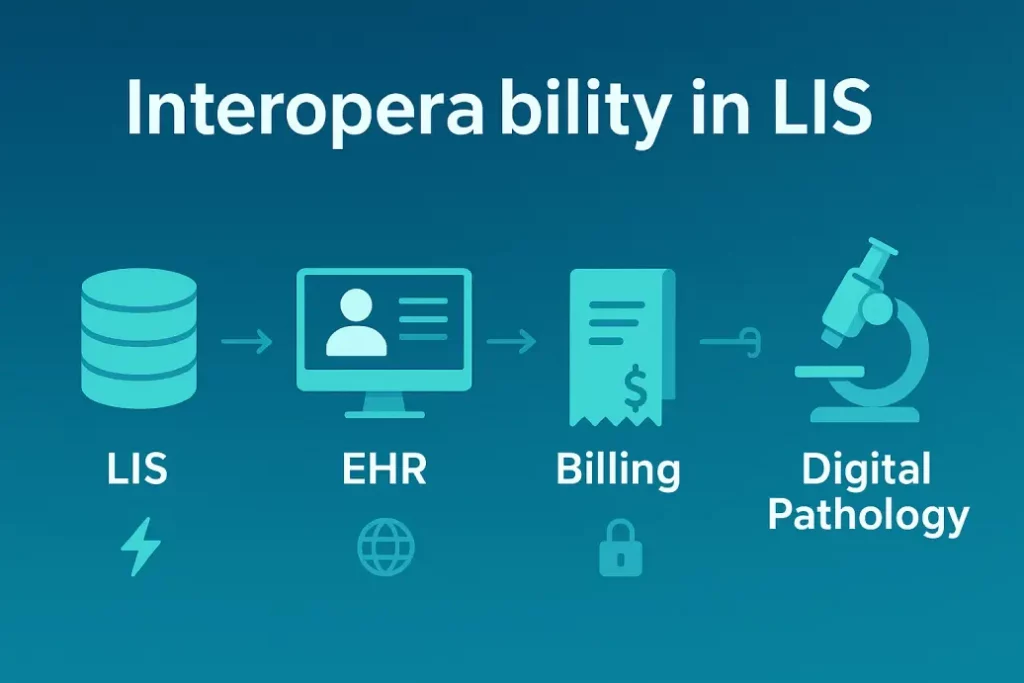
In the high-pressure environment of today’s labs, manual transfers, fragmented systems, and delayed communication can feel like a weight on shoulders that should be light. Interoperability unshackles this burden, transforming data into breath. When your LIS speaks freely with EHRs, billing systems, and digital pathology platforms, patients feel seen, clinicians feel empowered, and lab teams finally breathe.
2. SpeedsPath Vision: Intertwining Human Touch with Technical Rigor
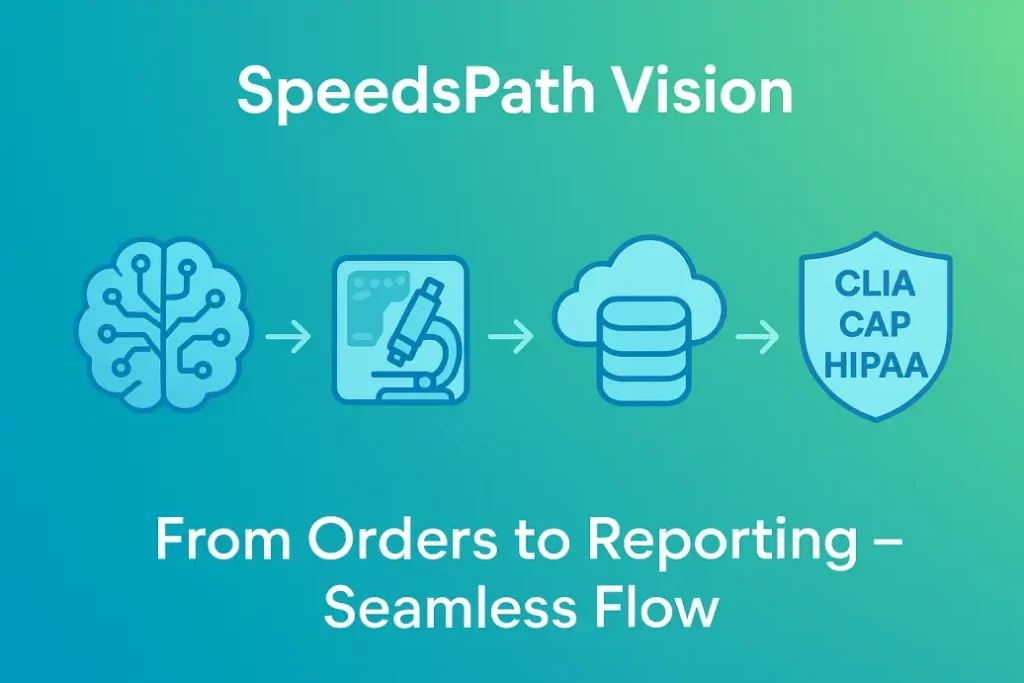
SpeedsPath AP (Anatomic Pathology) LIS isn’t just software, it’s a promise. A promise that your lab’s workflow from receiving an order, accessioning to reporting is anchored in:
Digital Pathology & AI integration, making manual drudgery obsolete and precision ever-present.
Automated sample tracking and real-time dashboards that let staff breathe easier and move faster.
Secure cloud access alongside regulatory peace of mind, thanks to built-in CLIA, CAP, and HIPAA compliance support.
We don’t just offer features, we deliver relief.
3. The Emotional Value of Seamless Lab Systems
Imagine your team already stretched without the worry of misentered data or delayed results. That sense of relief, each time a case updates automatically, is the feeling we build with our LIS. Our clients, especially in subspecialty pathology, tell us they’re saving hours, reducing errors, and finally experiencing the silent joy of efficiency.
4. Why Integration Matters Now More Than Ever
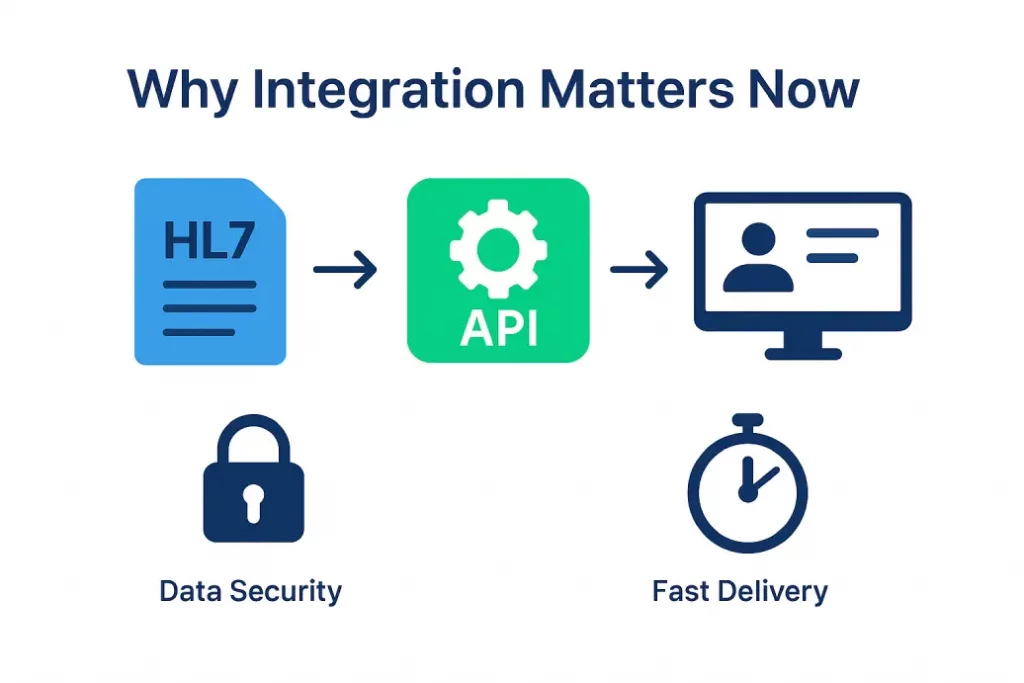
i). EHR–LIS & HL7 LIS Integration
Healthcare today moves at the speed of need. SpeedsPath integration via HL7 messaging, APIs, and standardized protocols ensures that when a test is ready, it’s not stuck in limbo; it’s in the clinician’s hands, timely and securely.
ii). Healthcare Data Exchange That Honors the Story
The interoperability structure and semantics are in place to provide that the information shared is not merely sent, but comprehended. SpeedsPath AP LIS makes this important need personal: your lab speaks the same language as the systems that guide care.
5. Deep Dive: SpeedsPath AP LIS Features That Make It Human
a) Real-Time Case Tracking & Dashboards
Gone are the frantic spreadsheets and frantic calls. With color-coded turnaround trackers and intuitive filtering, your staff can locate any case in a heartbeat, no detective work required.
b) Built for Collaboration
Pathologists, technologists, and clinicians don’t just want data; they want conversation. SpeedsPath builds in tagging, commenting, secure uploads, and contextual communication right where the case lives. No more scattered emails. Just clarity and connection.
c) Flexible Architecture That Grows with You
Your security, scalability and compliance are primary, while hosted in the cloud environment with anytime access from anywhere. SpeedsPath has been used with world-class support and reliability. Our design flexibility represents your lab and its unique course.
6. Benefits That Resonate In Numbers and in Heart
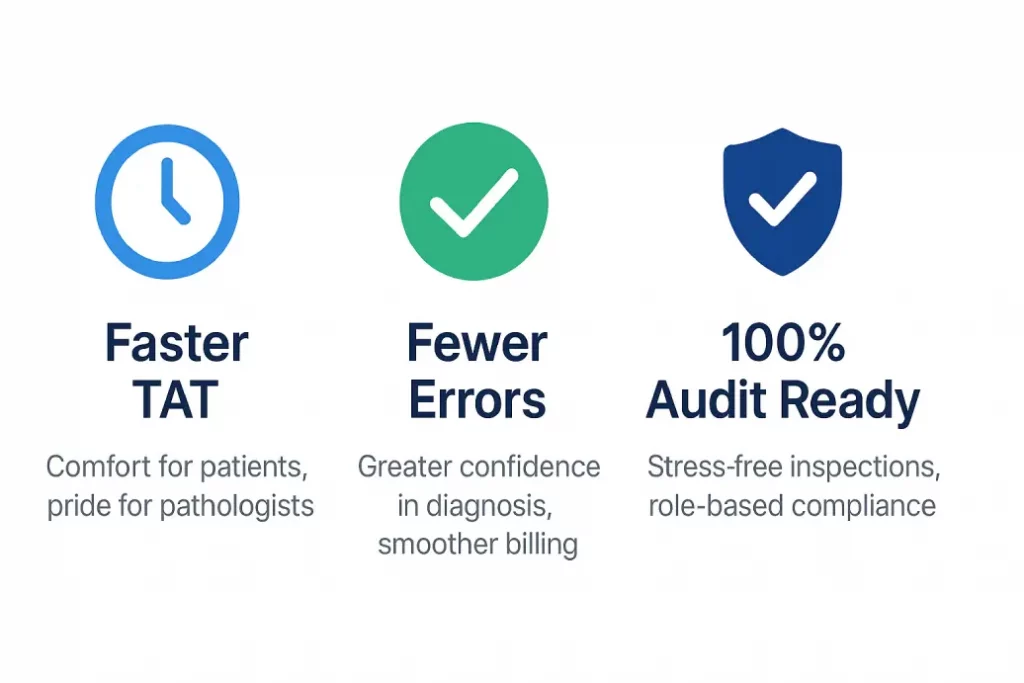
- Faster Turnaround, Better Outcomes: Subspecialty labs report tremendous reduction in case turnaround times after switching to SpeedsPath. That’s not just better efficiency, it’s comfort for patients waiting, and pride for pathologists delivering.
- Fewer Errors, Greater Confidence: When your LIS talks directly to EHRs and instruments, transcription errors fall away.
- The outcome: better confidence in the rated diagnosis and easier billing activities which lead to timely reimbursements and better patient outcomes.
- 100% Audit Ready: Role-based access, audit trails, and compliance built in all make CLIA and CAP inspections stress-free.
7. SpeedsPath in Action: A Human Perspective
I pay attention to the labs during the onboarding process. One lab manager shared, “For the first time, I could trust the system… and I found myself smiling at the end of the day. Where can I write a positive review?” That human uplift is what drives every line of code we write.
8. The Future Is Now, And It’s Collaborative
2025 isn’t about waiting; it’s about choosing systems that care. As labs handle growing sample volumes, complex diagnostics such as NGS or digital slide imaging, interoperability is the bridge between potential and performance. As AI, digital pathology, and cloud diagnostics evolve, SpeedsPath stands ready not just to exchange data, but to preserve the essence behind the data.
9. The Cost of Non-Interoperability: What Labs Risk by Waiting
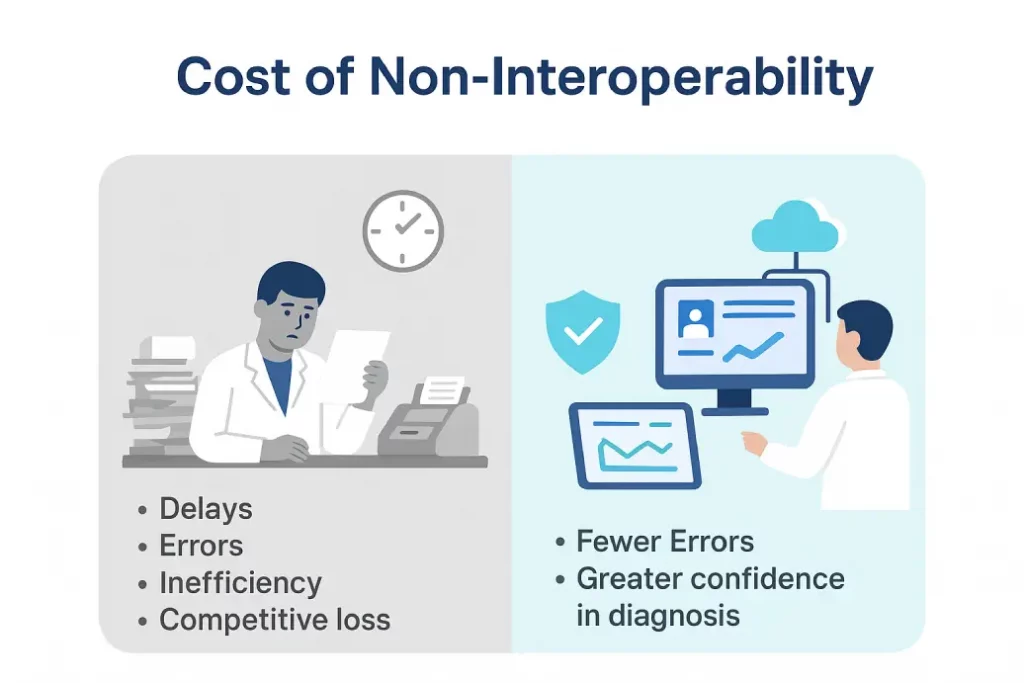
While the benefits of interoperability are clear, the costs of ignoring it are just as significant. Labs which remain with their fragmented systems are still at risk:
- Delay in the provision of care – The results of tests that have to be offered to physicians within minutes may take hours, or even a few days.
- Operational inefficiency – Operational inefficiency due to staff time spent chasing faxes, re entering data or explaining reports rather than high value work.
- Higher risk of errors – Data handling in a manual way entails the possibility of transcription errors that may potentially affect the safety of patients.
- Competitive disadvantage – Since referrals and contracts can be lost as interoperable labs come up to speed, labs that fall behind can wind up at a competitive disadvantage.
10. Beyond 2025: Building an Ecosystem of Connected Care
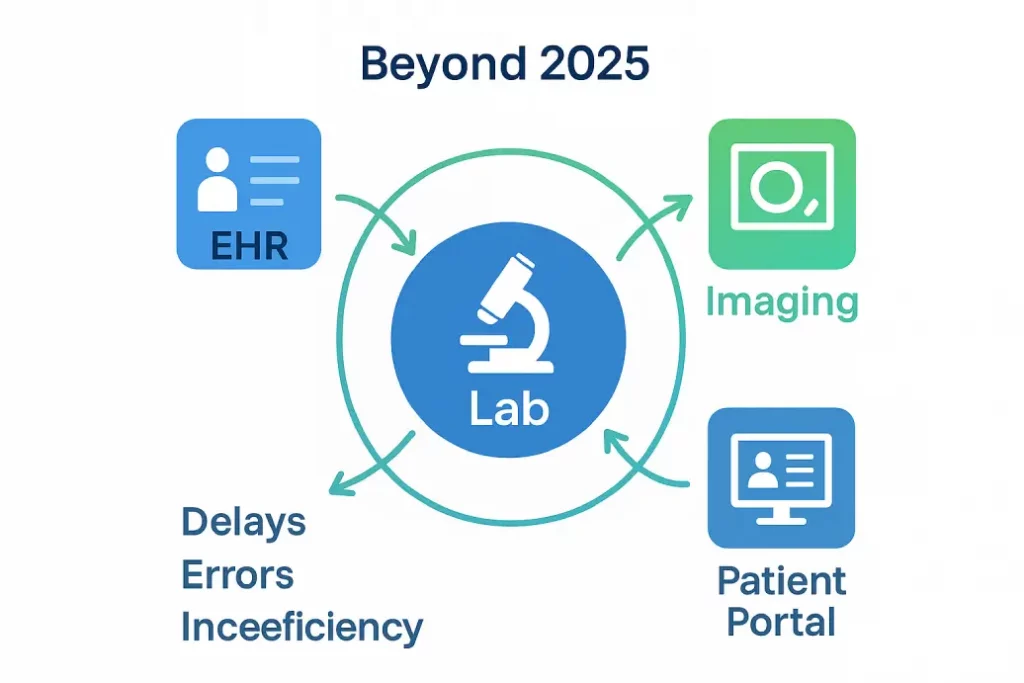
It is not the end game of interoperability; interoperability is the pillar of something bigger. When lab systems are completely integrated into EHRs, hospitals, imaging systems and even patient portals, health care becomes more collaborative and transparent.
- To the patients, this means that they can view their total medical record in a single location and thus be in control of their health.
- To providers, it gives a whole picture of individual patients, minimizing repetitions, and allowing them to customize treatment.
- It unlocks opportunities to innovate, such as in the use of advanced analytics, artificial intelligence-aided diagnostics, or networks used to share data in real-time.
Conclusion: Interoperability Is Human
At SpeedsPath we are not a technical check list in interoperability. We believe in giving our client labs the autonomy they require to achieve what is in the best interest of delivering timely results at pace, accuracy and care. That is our machinery: EHR-LIS-integration, HL7 standards, secure transfers of the data, etc., all this is machinery. The real outcome is the trust, which is present on the side of the labs’ referring or ordering physicians, the release of the overstrained lab employees, as well as the promise of the efficient labs.
One thing has become certain as we progress through 2025 – interoperability cannot be optional anymore. It is a key requirement of modern health care.
FAQ About LIS interoperability
Q1: What is LIS interoperability?
A: LIS interoperability refers to the ability of a Laboratory Information System (LIS) to seamlessly exchange data with Electronic Health Records (EHRs), instruments, and other healthcare platforms. This ensures accurate, real-time communication that improves patient outcomes and lab efficiency.
Q2: Why is LIS–EHR integration important in 2025?
A: In 2025, LIS–EHR integration is critical because it eliminates manual data entry, reduces errors, accelerates turnaround times, and supports value-based care models where timely and accurate lab data is essential.
Q3: What role does HL7 play in LIS interoperability?
A: HL7 (Health Level Seven) is a set of international healthcare data standards that ensures LIS systems can communicate effectively with EHRs and other clinical software. HL7 LIS integration enables consistent, secure, and standardized healthcare data exchange.
Q4: How does LIS interoperability improve healthcare data exchange?
A: Interoperable LIS systems enable real-time healthcare data exchange between labs, clinicians, and patients. This allows for faster diagnoses, reduced duplication of tests, better collaboration, and improved patient care.
Q5: What are the risks of not having LIS interoperability?
A: Labs without LIS interoperability face delayed reporting, higher error rates from manual entry, compliance risks, operational inefficiency, and loss of competitive advantage compared to labs that offer seamless integration.
Q6: How does SpeedsPath support LIS interoperability?
A: SpeedsPath AP LIS provides robust EHR–LIS integration, HL7 support, cloud-based access, compliance tools, and AI-driven digital pathology features. These capabilities help labs streamline workflows, reduce errors, and improve turnaround times.

